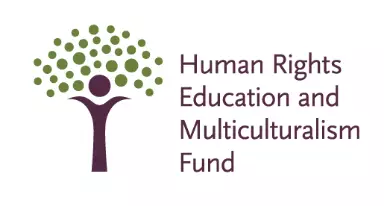
Donate to the Linda McKay-Panos Scholarship Fund

Donate to the Linda McKay-Panos Scholarship Fund
While statistics show that, on average, youth ‘come out’ between 14 and 16 years of age, there is very little information stating how many Canadian youth identify as LGBT+. As well, the information that does exist about the number and experiences of LGBT+ youth is often muddled by the fact that many LGBT+ youth may not have accepted that status yet, or may be keeping it a secret from their friends and family.
Despite these confounding factors, there have been some attempts to determine what portion of the youth population identifies as LGBT+. In 2013, a comprehensive health survey in British Columbia found that 81% of youth ages 12-19 identify as completely straight. However, only 2% of youth identified as gay or lesbian, while the rest identified as bisexual, asexual, or questioning. Less than 1% of youth identified as transgender, and 5% of Aboriginal students identified as two-spirit. The percentage of students who identified as an orientation other than straight rose in all categories from previous years.
According to another poll, “[y]ounger Canadians are far more likely to say they are lesbian, gay, bisexual or transgender than older Canadians, with 10% of those aged 18 to 34 answering the question with a ‘yes,’ compared to 2% or 3% in the four older age categories”. Additionally, the poll found that, on average, 37% of Canadians know someone in a same-sex marriage.
The number of ‘out’ youth and the acceptance of them in their communities are increasing, yet there are still a number of issues faced by LGBT+ youth. Research out of Toronto indicates that potentially as many as 1 in 5 homeless youth identifies as LGBT+, and that they are more likely than other youth to be on the streets instead of in shelters due to homophobia and the fear of violence. According to PFLAG Canada, upwards of 26% of LGBT+ youth are told to leave home.
LGBT+ youth also have a high risk of engaging in self-harm, particularly if they have not come out yet or have not been accepted by their family. Research indicates that approximately 30% of youth suicides are by LGBT+ youth, and that 43% of trans-identified youth are likely to attempt suicide. Among LGBT+ youth there is a 20% increase in suicide attempts for those in unsupportive environments. Regardless of other risk factors, such as depression or substance abuse, living in a supportive environment is associated with significantly fewer suicide attempts.
In spite of the issues faced by some LGBT+ youth, many families are supportive, open, and accepting of their LGBT+ children. These families represent a wide array of religions, ethnicities, cultural backgrounds, and abilities. While the stereotypical story of an LGBT+ youth being unaccepted still holds true in some families, it is important to recognize that an increasing number of parents love their child regardless of their sexual orientation or gender identity.
DID YOU KNOW? There are weekly support groups for LGBT+ and questioning youth. Contact the Inside Out Youth group in Calgary or the Pride Centre Edmonton
Canada was the third country, following the Netherlands and Belgium, to legally recognize same-sex marriage. The Supreme Court of Canada heard the reference case brought by the Ontario government sixteen months after same-sex marriage had already been accepted in Ontario. During that time, six provinces/territories-Ontario, British Columbia, Quebec, the Yukon, Nova Scotia, and Manitoba -officially recognized same-sex marriage. Other provinces and territories waited for the ruling from the Supreme Court of Canada.
Until recently, the preamble to the Alberta Marriage Act, which was written in 2000 under a Charter notwithstanding clause, continued to recognize marriage as only between a man and a woman, despite the fact that the Supreme Court of Canada confirmed that marriage is a federal issue and not under the Province’s jurisdiction. This left Alberta as the only province in Canada that resisted fully accepting the Supreme Court of Canada’s decision to recognize same-sex marriage. That resistance has since ended.
On May 14, 2014, amendments to the Alberta Marriage Act came into force that eliminated most of the preamble, leaving only the royal enactment statement. The amendment also repealed the definition of “marriage” as being between a man and a woman, and replaced the words “husband” and “wife” with the gender neutral “spouse” throughout the Act.
This change is a reflection of the increasing acceptance of the LGBT+ community in Canadian society. In 2012, a Forum Research poll found that approximately 5% of the Canadian adult population identifies as LGBT, a third of which are married to a partner of the same-sex. According to the poll, “[y]ounger Canadians are far more likely to say they are lesbian, gay, bisexual or transgender than older Canadians, with 10% of those aged 18 to 34 answering the question with a ‘yes,’ compared to 2% or 3% in the four older age categories”. Additionally, the poll found that, on average, 37% of Canadians know someone in a same-sex marriage.
In the 2011 Canadian Census, a total of 64,575 same-sex couple families were reported. This is a 42.4% increase from the previous Census in 2006. Of those couples, 32.5% (21,015) were married couples, while the rest were common law couples (43,560). The number of same-sex married couples increased by 181.5%, almost tripling from the number in 2006. This represents a dramatic growth in the first five years that same-sex marriage was legal in Canada. As of the 2011 Census, same-sex couples represented approximately 0.8% of all couples in Canada, which was consistent with data from Australia, the United Kingdom, and Ireland.
Access to marriage is an important right because it not only means that same-sex couples can get married, but also that they have access to the same rights as heterosexual couples. These rights include: division of matrimonial property, rights to the estate if their partner dies without a will, and adoption rights.
Compared with nearly half of all opposite-sex couples (47.2%), only 9.4% of same-sex couples have a child at home. According to the 2011 Census, female same-sex couples are almost five times more likely to have children (16.5%) than male same-sex couples (3.4%). Same-sex married spouses are more likely to have children compared to couples in common-law partnerships.
The secretiveness of heterosexual youth who have LGBT+ parents will depend upon many factors, such as the reaction of teachers, classmates and friends, whether the classroom is a safe LGBT space, the student’s religious and cultural background, past experiences of coming out, and the youth’s own self-esteem. Some youth will be ‘out and proud’ while others may choose to keep the information about their parents’ status to themselves. Neither reaction is right or wrong; however, the way that the school addresses the issue of discrimination will make a big difference in a youth’s self-esteem and daily lived experience.
Although same-sex parents have been, and continue to be, subject to stigma and discrimination, a recent research study out of Australia indicates that same-sex parents raise children who are happy and healthy, sometimes more so than children in traditional households. Even when controlling for factors such as parents’ education and the family’s socio-economic status, children with same-sex parents scored noticeably higher than the general population in the areas of overall health and family cohesion. Unfortunately, the study also found that around two-thirds of the children with same-sex parents had experienced some kind of stigma or discrimination because of their parents’ sexual orientation. This stigma tended to have the most significant impact on the child’s mental and emotional well-being.
On the bright side, a 2013 report by the American Academy of Pediatrics indicates that children with same-sex parents demonstrate resilience in the areas of social and emotional health despite the stigma faced by their families, demonstrating that their “well-being is affected much more by their relationship with their parents … than by the gender or sexual orientation of their parents.”
In 2007, the Ontario Court of Appeal decided that it was within the court’s jurisdiction to decide whether a child could have more than two legally recognized parents. In the following years, many other provinces, including Alberta, made similar decisions on their own three-parent cases. Although these cases represented tremendous progress for the LGBT+ community and other non-traditional families, each application still had to be considered and decided upon individually.
Early in 2013, however, British Columbia became the first province to enact legislation that will allow birth certificates to list more than just two parents. The new legislation will allow donors to be listed as additional parents, so long as all of the parents sign a written agreement prior to conception. This is a significant step toward recognizing that families come in a variety of forms, and will hopefully be emulated in the other provinces and territories.
While there is some limited information regarding transgender and transsexual youth, there is very little information about or for adults who discover their trans status later on in life. As well, there is increasing awareness of the need for resources, services, and clinical programs for transgender and transsexual youth, to help them through the transition process and provide them with tools to deal with discrimination and harassment. Trans adults often face the same issues, but without the same support.
Recently, both Alberta and Ontario have tackled issues of discrimination toward trans-identified individuals with respect to official government documentation, specifically birth certificates. In each of these cases, the legislation allowed transgender persons to request that the sex on their birth certificate be changed to their identified sex, but only if they had undergone genital surgery.
As stated by the Ontario Human Rights Tribunal, “the requirement that birth certificates reflect the sex assigned at birth unless a person has and certifies to the respondent that he or she has had ‘transsexual surgery’ is substantively discriminatory because it perpetuates stereotypes about transgender people and their need to have surgery in order to live in accordance with their gender identity, among other things.”
Having a trans parent, especially one in transition, is also a time of transition for the family unit. Family members typically experience an array of emotions toward the transition, including shock, guilt, grief, betrayal, embarrassment, and fear for their loved one’s future. It is important as outsiders of that individual family to remember that it is the family itself that has the right to develop healthy methods of dealing with each other’s’ differences. Outside members should be cautious, and ensure that they first have a full understanding of gender identity issues before asking if their advice is welcome. More than anything, a child whose parent is transitioning, or already has, requires support and acceptance in a safe environment.
DID YOU KNOW? Resources for youth and adults in transition, and their family members can be accessed on the PFLAG Canada website and local support groups can be found on the Alberta Trans website.




2500 University Drive NW
Calgary, AB T2N 1N4
(403) 220-2505
aclrc@ucalgary.ca